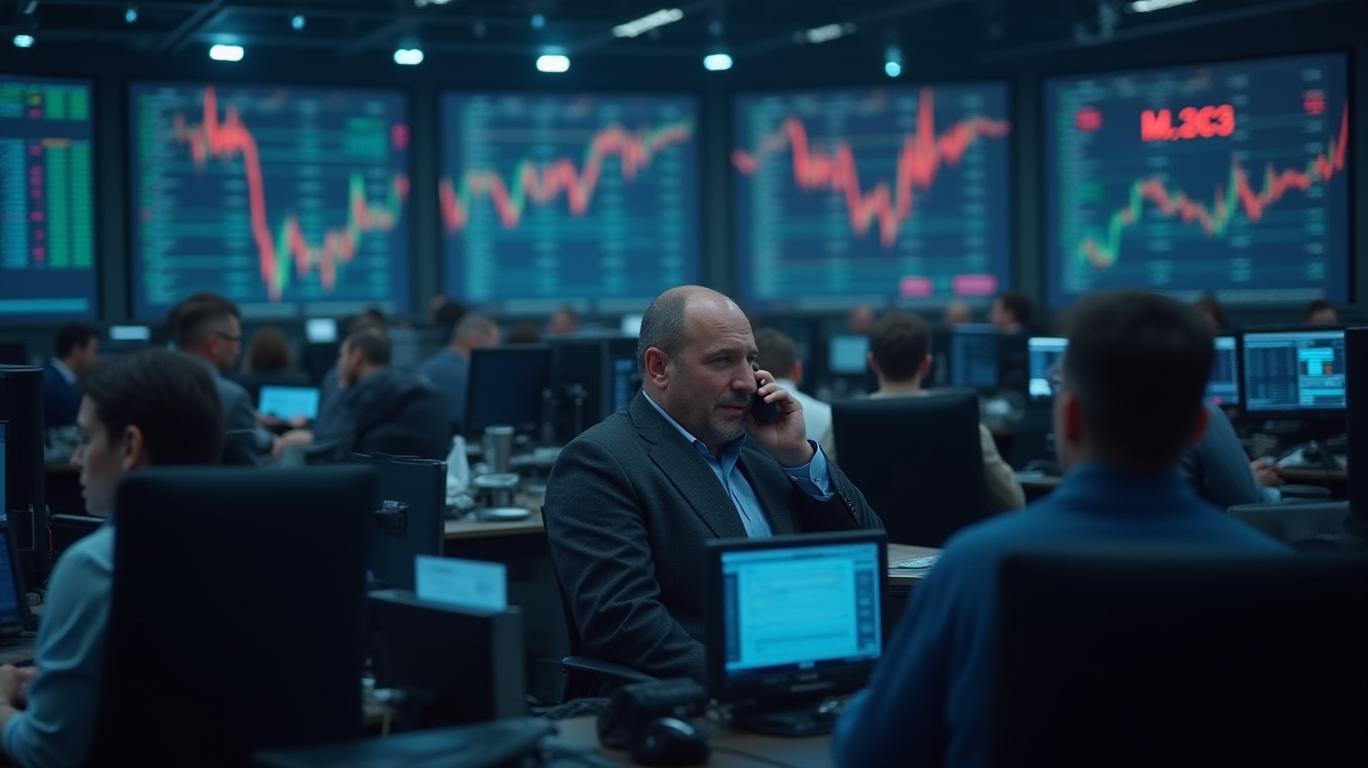Navigating the Storm: DAX's Volatility and Opportunities in a Tariff-Driven World
The escalating U.S.-EU tariff war has sent shockwaves through global markets, with the German DAX index—a bellwether for European equities—caught in the crossfire. As the June 1 deadline for a 50% U.S. tariff on EU goods looms, investors face a critical decision: ride out the volatility or seize undervalued opportunities in sectors resilient to trade disruptions.

Policy-Driven Volatility: The DAX's Immediate Crossroads
The DAX, home to heavyweights like BMW,
, and Siemens, is uniquely exposed to trade tensions. The proposed U.S. tariffs threaten to disrupt supply chains, inflate production costs, and reduce export competitiveness. A reveals a 6% decline since April, with sectors like automotive and chemicals leading the slide.Yet this volatility creates an asymmetric opportunity. While near-term uncertainty persists, the DAX's valuation—trading at a 10-year low of 14.5x forward P/E—suggests a margin of safety. Investors who act decisively could lock in positions ahead of a potential rebound if negotiations avert the worst-case scenario.
Sector-Specific Vulnerabilities: Where to Tread Carefully
Not all DAX components are equally vulnerable. A granular analysis of sector exposure is critical:
Automotive & Machinery:
Companies like BMW and Daimler face a double threat: U.S. tariffs on EU exports and retaliatory measures from the EU targeting U.S. automakers. A shows a 15% drop since January, reflecting investor anxiety. Supply chain costs could rise further if steel and aluminum tariffs (CN 7204, 7602) are imposed, squeezing margins.Chemicals & Industrials:
BASF and Covestro are exposed to tariffs on chemical exports (e.g., toluidines, CN 2921 43). The EU's retaliatory threat to impose duties on U.S. agricultural goods like soybeans could also disrupt feedstock availability, amplifying cost pressures.Tech & Consumer Goods:
SAP and Siemens, while less directly impacted by tariffs, face risks tied to global trade uncertainty. A slowdown in cross-border investment and manufacturing could dent demand for enterprise software and industrial equipment.
The Silver Lining: Sectors to Bet On
Amid the turmoil, certain DAX segments are poised to outperform:
Healthcare & Pharmaceuticals:
Companies like Bayer and Fresenius have stable demand and are less reliant on cross-Atlantic trade. Their defensive profiles make them a haven in volatile markets.Renewables & Utilities:
The energy transition remains a priority for the EU, shielding firms like RWE and EON from trade-related headwinds.Domestic Consumer Plays:
Companies with strong local demand, such as Metro AG or Adidas, could thrive as export-dependent peers falter.
Timing the Trade: Act Before June 1
The June 1 tariff deadline is a pivotal inflection point. If the U.S. proceeds, the DAX could drop further, creating even deeper discounts. If negotiations succeed, the index could rebound sharply. Either way, the window for strategic positioning is narrowing.
The EU's $108 billion retaliatory tariff list—suspended until July 14—adds another layer of uncertainty. Investors should prioritize companies with:
- Diversified revenue streams (e.g., Siemens' global industrial footprint).
- Strong balance sheets to withstand short-term shocks.
- Exposure to non-U.S. markets, such as China or Asia-Pacific.
Conclusion: Volatility is the New Normal—Embrace It
The DAX's current undervaluation and sector-specific resilience make it a compelling contrarian play. While near-term volatility is inevitable, the index's historical correlation with geopolitical calm (and its recovery potential post-resolution) suggests a high risk/reward asymmetry.
For investors with a 6-12 month horizon, now is the time to:
1. Short-term hedge using put options on auto/chemical stocks.
2. Overweight healthcare and utilities.
3. Buy the dip on industrials if tariffs are delayed beyond June 1.
The stakes are high, but so are the rewards. The DAX's near-term pain could become long-term gain for the bold.
Act now—before the storm passes.

Comments
No comments yet